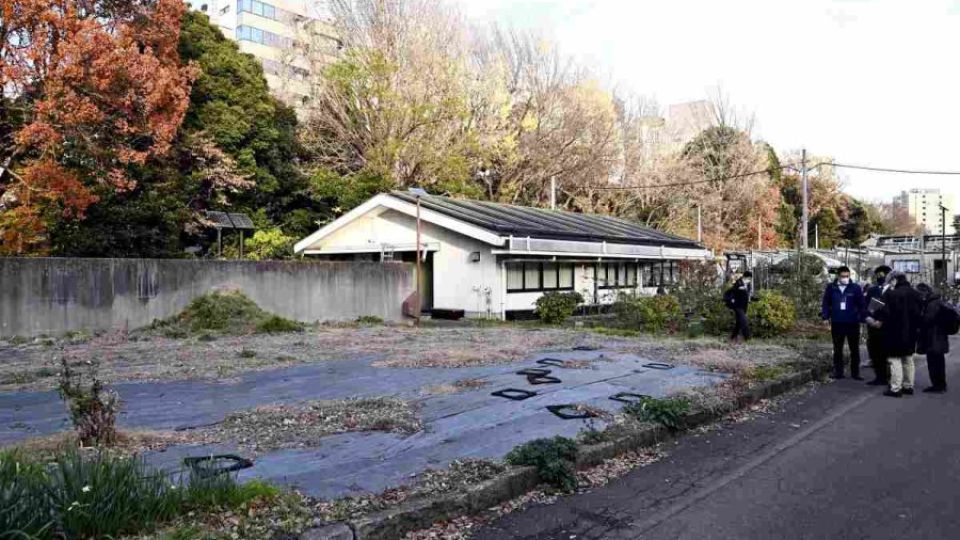January 25, 2023
TOKYO – Last month, the government announced it will conduct an experiment on the feasibility of relocating soil from sites where decontamination work was carried out following the 2011 accident at the Fukushima No. 1 nuclear power plant. The soil is slated to be moved to three locations in the Kanto region.
The experiment aims to confirm the safety of reusing soil with relatively low radioactivity, while also reducing the amount of radioactive waste to be disposed of outside Fukushima Prefecture. However, gaining public understanding over safety concerns is likely to prove a high hurdle.
Following the accident at the plant, owned by what is now Tokyo Electric Power Company Holdings Inc., radioactive substances were discharged across a wide area, though the majority fell around the power plant.
To expedite the reconstruction of affected areas, the government began decontamination work soon after the accident on residential and farm land. Most of the removed material was surface soil. A total of 14 million cubic meters of soil has been removed — enough to fill 11 Tokyo Domes.
Currently, the soil is stockpiled in a 16-square-kilometer storage facility that spans the two prefectural towns of Okuma and Futaba.
The plan for the soil is for it to be finally disposed of outside Fukushima Prefecture by 2045. When the central government asked the two town governments to accept the facility, it pledged that the storage would be temporary, a vow contained in the law on the establishment of Japan Environmental Storage & Safety Corp., which was passed in November 2014. The law stipulates that the soil should be relocated outside the prefecture, though exact locations, methods of disposal and other matters have yet to be decided.
The Environment Ministry believes it might avoid having to dispose of the 75% of the soil which has a density of radioactive cesium of 8,000 becquerels or less per kilogram. Instead, it plans to reuse this material in public works nationwide. In such a case, the amount of “hazardous” soil for disposal will be reduced to about 25%.
“By reducing the amount to be disposed, we hope to lower the hurdle for securing areas that are willing to accept the material as a final destination,” a senior ministry official said.
According to experts, a level of 8,000 becquerels per kilogram exposes a person to radiation of 1 millisievert or less annually if they worked near the soil for 1,000 hours for the year. One millisievert per year is deemed the maximum allowable limit of radiation exposure for ordinary citizens, according to the International Commission on Radiological Protection.
Previous projects
The ministry has already conducted similar experiments in Iidate village and Minamisoma City in Fukushima Prefecture. According to the ministry, measurements of radiation dose-volume around the sites and radioactive density in agricultural products did not breach safety limits.
For its latest demonstration experiments, the ministry plans to temporarily relocate portions of the Fukushima Prefecture soil to Shinjuku Gyoen National Garden in Shinjuku Ward, Tokyo; the National Environment Research and Training Institute in Tokorozawa, Saitama Prefecture; and the National Institute for Environmental Studies in Tsukuba, Ibaraki Prefecture. All three locations are managed by the ministry, allowing the experiments to be conducted in areas not accessible to the public.
At Shinjuku Gyoen National Garden, a hole measuring three meters long, 10 meters wide and one meter deep will be dug and lined with waterproof sheets. Then, about six cubic meters of soil from a decontamination site will be placed into the hole to a depth of 50 centimeters, and covered by 50 centimeters of regular soil. The site will then be converted into a flowerbed.
Radioactive levels will be measured and any water that concentrates within the waterproof sheeting will be discharged into the sewer system after being checked for safety. When the experiments end, the soil from all three sites will be returned to Fukushima Prefecture.
However, residents near the experiment sites have voiced deep-rooted concerns. The ministry held explanatory meetings in Shinjuku Ward and Tokorozawa last month for local residents. A 75-year-old woman at the Shinjuku meeting said, “Is it really safe?” and a 77-year-old man said, “I’m not convinced as to why [an experiment] has to be conducted in central Tokyo.”
It is likely that treated water from the Fukushima No. 1 nuclear power plant will be discharged into the sea starting this summer. Pollutants — primarily radioactive substances — have been removed from the water.
The disposal method for the water, among other measures, has been the subject of ongoing public discussions by experts for many years. The amount of processed water has continued to increase, and water-storage tanks are slated to reach full capacity in around summer or autumn.
In contrast, the amount of soil removed from sites in Fukushima Prefecture is not likely to increase from its current level, so there are no concerns over the interim storage facility becoming full, and the time limit for final disposal outside Fukushima Prefecture will not be reached for more than 20 years.

